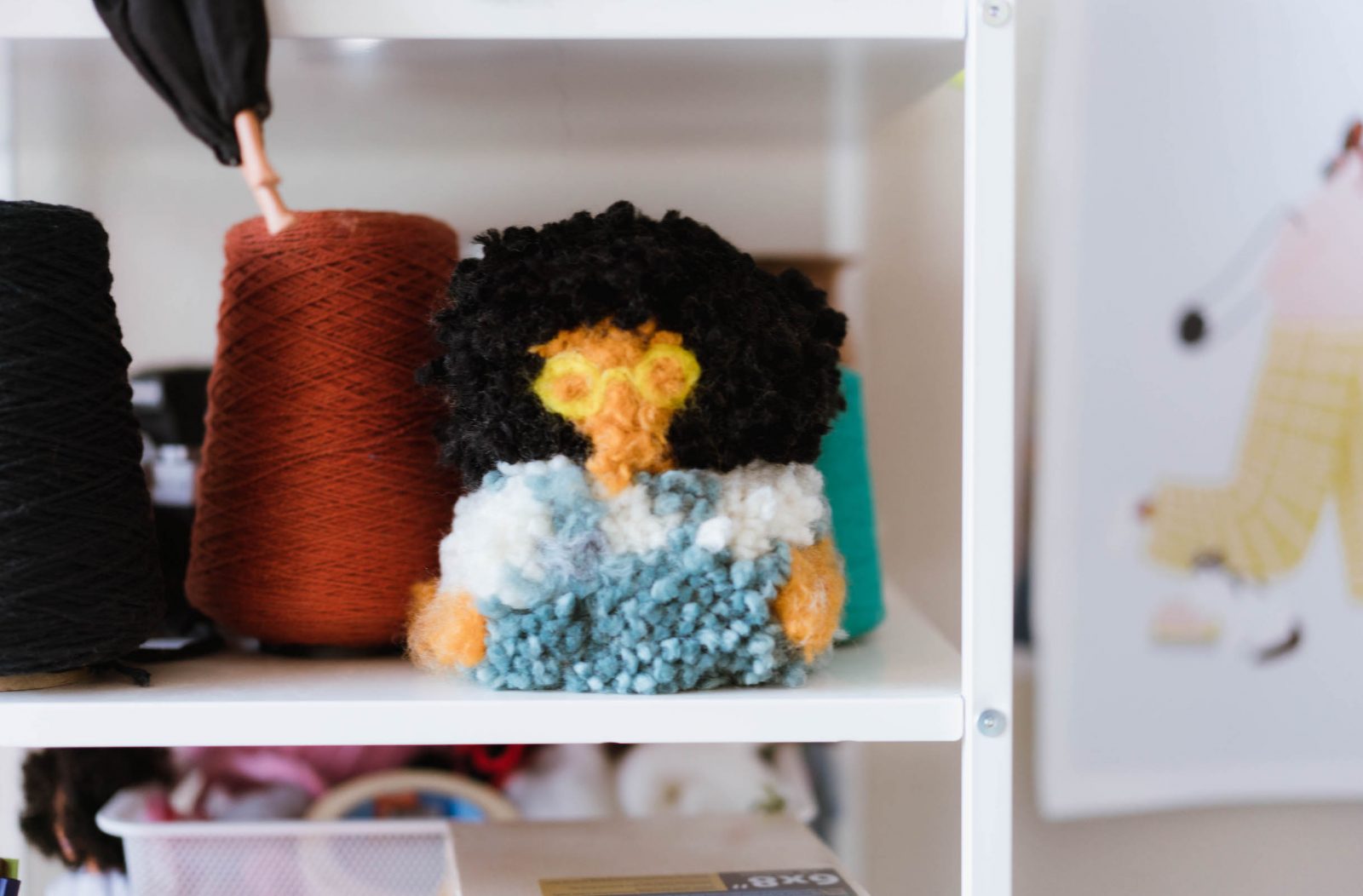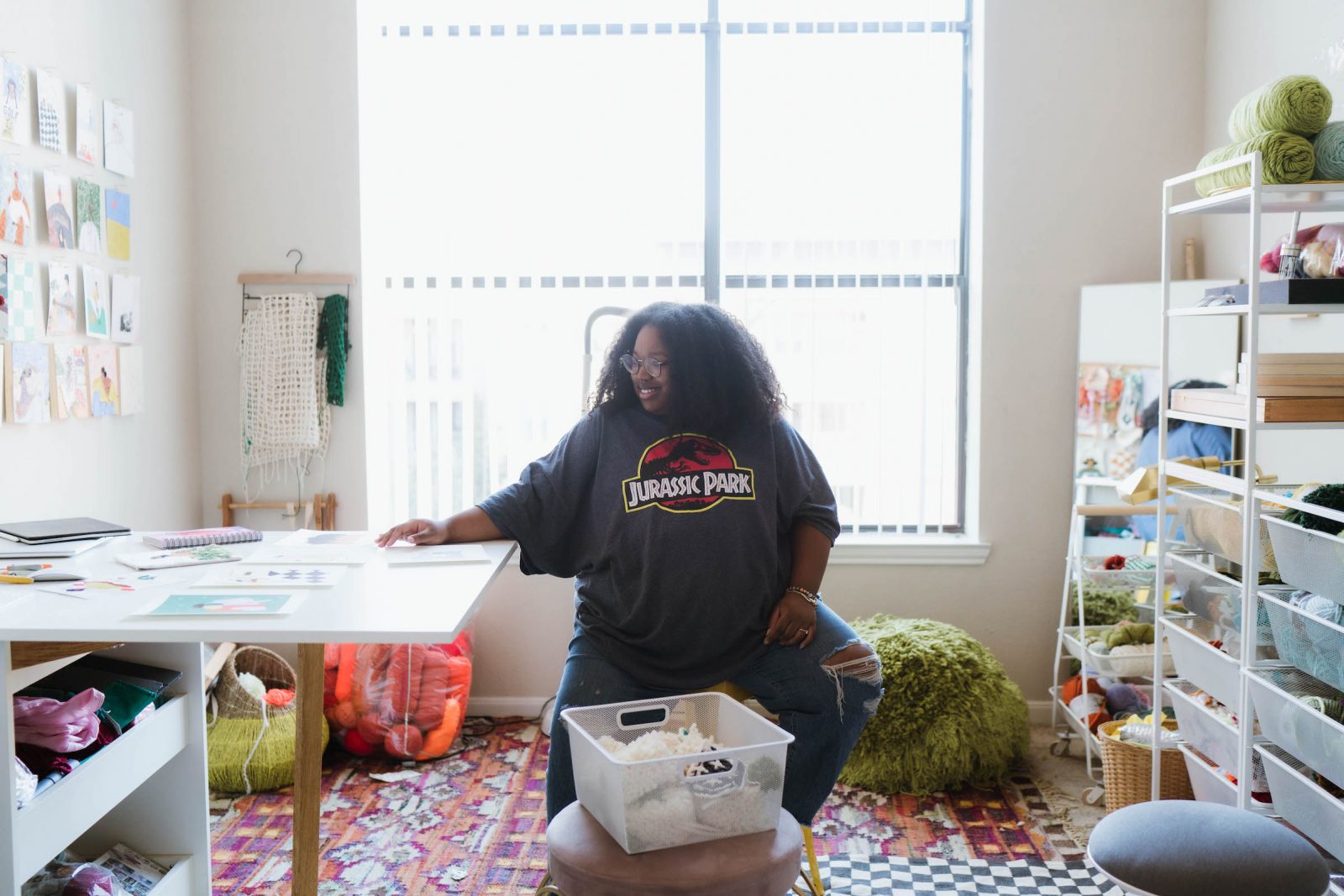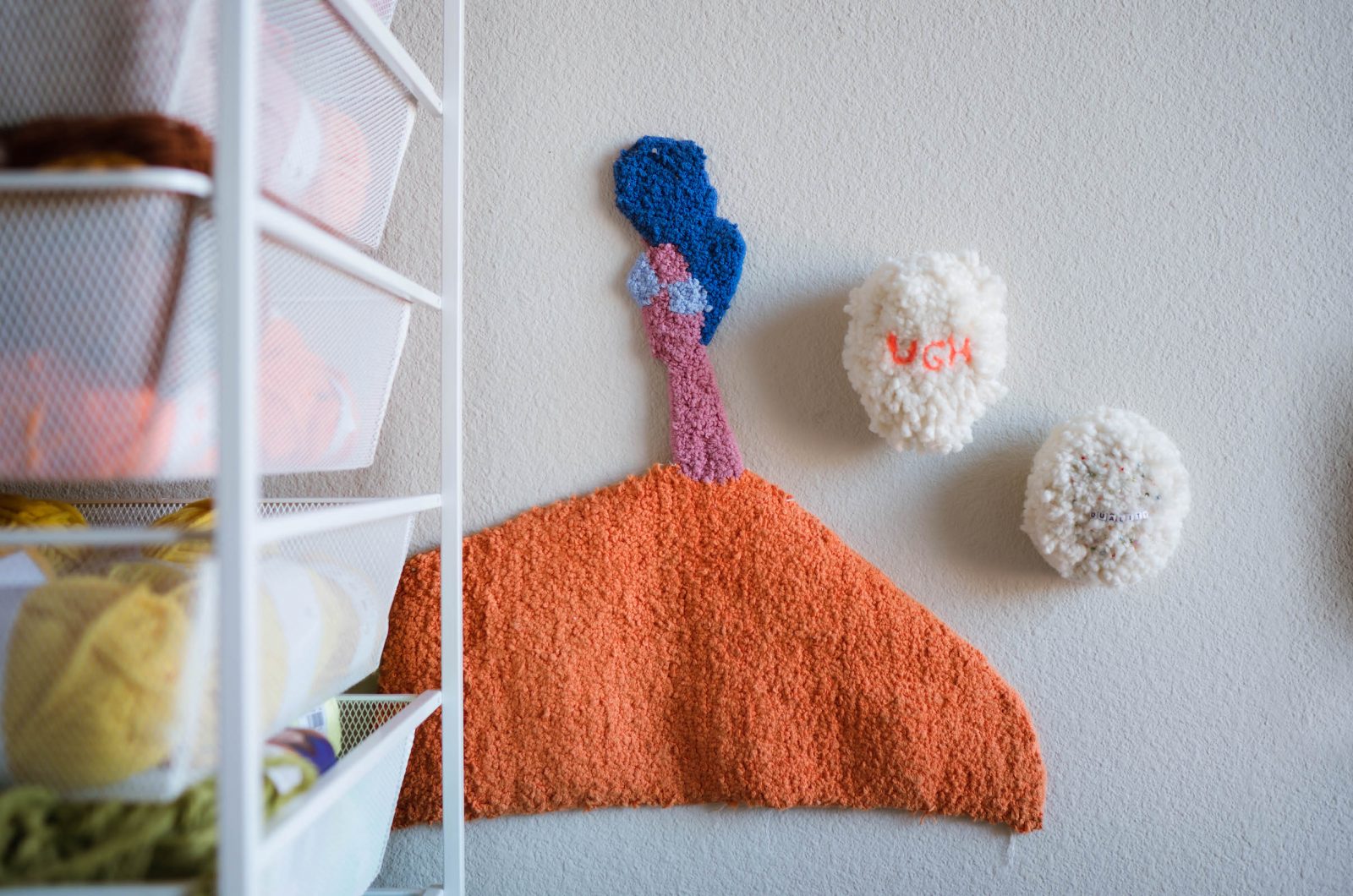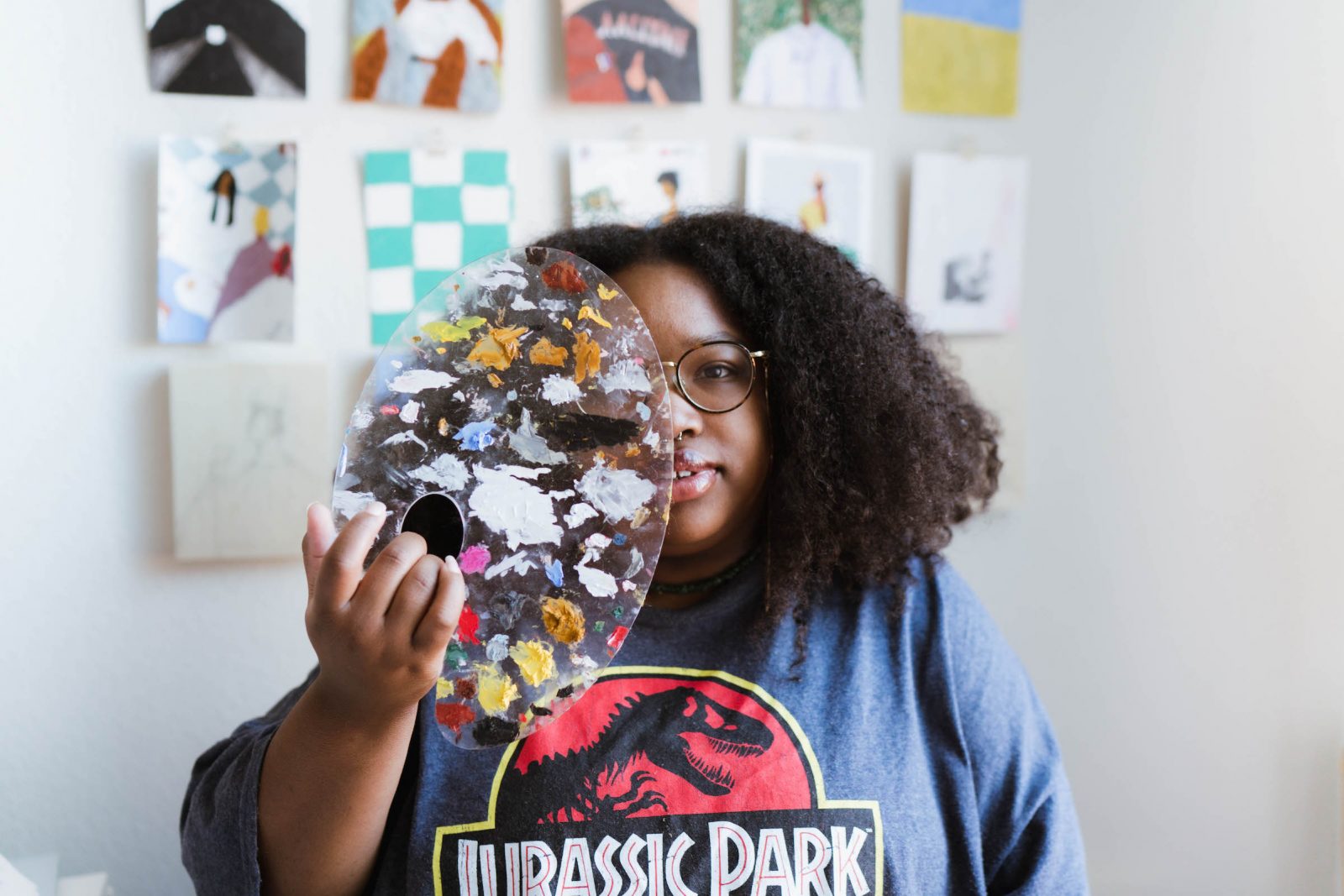It’s more than easy to see yourself in Dallas-based illustrator Niki Dionne’s work.
Her vignettes are genre paintings for the modern woman, capturing the small, honest moments of carrying grocery bags back to your car, cleaning your glasses or rifling through a stack of books. We spoke with Niki about how she landed on her instantly recognizable style and about how being guided by consistency is her secret to success.
First off, tell us a bit about yourself—the Niki Dionne “elevator pitch” if you will.
Hey y’all! I’m Niki Dionne–I go by either name. I was born in Oklahoma, raised in Houston and currently based in Dallas, Texas. My work explores how the “perceived self” influences the “presenting self” of women of color and how it shapes their identity. Using various mediums including fiber, oil pastels, digital illustration and animation, I try to capture moments all women can find themselves in.
You work with a lot of different mediums—textiles, digital, pastels—how do you approach this? Do you just work on whatever you’re feeling on a particular day, or do you like to work on projects more methodically?
More often than not, I work with the medium that calls to me on a day-to-day basis. I know that sounds a bit woo-woo, but it’s the truth. If I’m not in the middle of a project for a show or client, I get inspired by which process is most appealing to me in the moment. Sometimes I start with an idea or a digital sketch, and then I choose which medium I want to use to make it a reality; while other times, I’ll go in wanting to work with a certain medium and allow the image/sketch to develop from there.

Your style is super defined and recognizable, and I know a lot of artists really struggle to find their own unique style—how did you land on yours and what advice would you give someone who can’t quite figure out what works for them?
This is my all time favorite compliment! I remember when I first started getting attention for my illustrations four years ago. I would stalk my favorite artists and drool over their style and how all their work looked like it belonged in the same world. I thought I’d never find my own, and honestly, I didn’t even know I had until someone praised me for it.
My best advice to artists looking for their style is to just continue to practice. As you put in hours, you will find you return to shapes that are familiar to you. Once you find these strokes, accentuate them, play with them and make them more pronounced. For example, small heads and long necks are commonly found in my work. During my sketching, I found I tended to start my sketches with the head and neck, so I played around with it, developing the style you see today.
What artistic medium, besides visual art, inspires you the most? Music? Movies? Dance?
I would have to say the art of an unfiltered selfie inspires me the most. There’s something about the way we see ourselves that speaks to beauty and identity, both of which drive my work. I find I tend to take selfies in moments where I feel beautiful, or productive, or even sad. These snapshots of moments captured from the perspective of the muse inspire my art.

“I really [want] to emphasize that Black women are not a monolith. We take many forms, come from many different backgrounds, and yet, I can’t help but feel, are all still connected through our different paths.”
What makes an ideal studio or workspace for you? What items can you not live without (include any music, Podcasts or shows you always have going on in the background!)
As far as a workspace goes, without a doubt, light! Light fuels my creativity and my productivity. In my studio, I have floor to ceiling windows that stay open and several daylight lamps for when the sun goes down. I’d also have to say stools. In my space I have six different types of stools, and each sit at different heights. My stool choice varies depending on which medium I’m working with.
I love working with an album playing in the background. Lately, I’ve been vibing to Man on the Moon III, but generally I prefer to have a female voice crooning in my ear, like Brittany Howard, Lianne La Havas, or Ari lennox.
I noticed you recently had some gallery shows (congrats!). Can you tell us a little bit about how those came about and also what was going through your head the first time you saw your work hanging up in an art space?
Typically, in my work you will see an illustrated woman caught in a moment of time. In my recent gallery work I pushed my depiction of these women to take new forms through knitted and felted pieces that still hold the visual impact of my style. I really wanted to emphasize that Black women are not a monolith. We take many forms, come from many different backgrounds, and yet, I can’t help but feel, are all still connected through our different paths.
The first time I saw my work hanging in an art space, I was bouncing between excitement and anxiety. I felt like it was a part of me hanging on the wall for strangers to dissect. The first body of work that hung on the wall wasn’t made with that intention, so seeing it in a public space was an adrenaline rush that I am now addicted to! HAHA!
“When I first started out, I was hesitant to give myself a title of artist because so much of what I do is self-taught and approached with a spirit of ‘let’s try this and see what happens.’ Since my first show, I have learned that my art is making an impact on others, and I am affirmed of my path!”

Tell us a little about the “art scene” (is that even a thing?!) in Dallas—how has the creative community there encouraged you, and in what ways do you wish it would improve?
So I’ve only begun to dip my toe in the expanse that is the Dallas art scene, but since I’ve entered the space, the community has helped me firmly stand in my power as an artist. When I first started out, I was hesitant to give myself a title of artist because so much of what I do is self-taught and approached with a spirit of “let’s try this and see what happens.” Since my first show, I have learned that my art is making an impact on others, and I am affirmed of my path!
As I continue to build connections within the Dallas art scene, I’m finding knowledge gaps that I’m eager to fill. While galleries typically handle installation of work, I want to increase my knowledge of framing specifically. A framing job can completely shift the way a piece of art is viewed, and I want to be able to wield that power. *LAUGHS MANIACALLY*
Lastly, what is it like to run your own business? What, to you, have been the biggest challenges and when have you felt the most rewarded by your hard work?
To me, the hardest part of being an artist and making it a business is consistency (…or maybe self-promotion?) Let’s go with consistency. Most artists would agree that making bodies of work takes a lot out of you, both mentally and physically. It’s so hard for me to be consistent. Every year, I try to do one of those month-long daily drawing challenges. And after, say four or five, I’m burnt out. LOL. I just have to remind myself this is not a race and allow myself to create when I feel inspired and let it come naturally. Which may not be the best advice for someone who wants to make a business out of their art, but for me, it works.

Comments